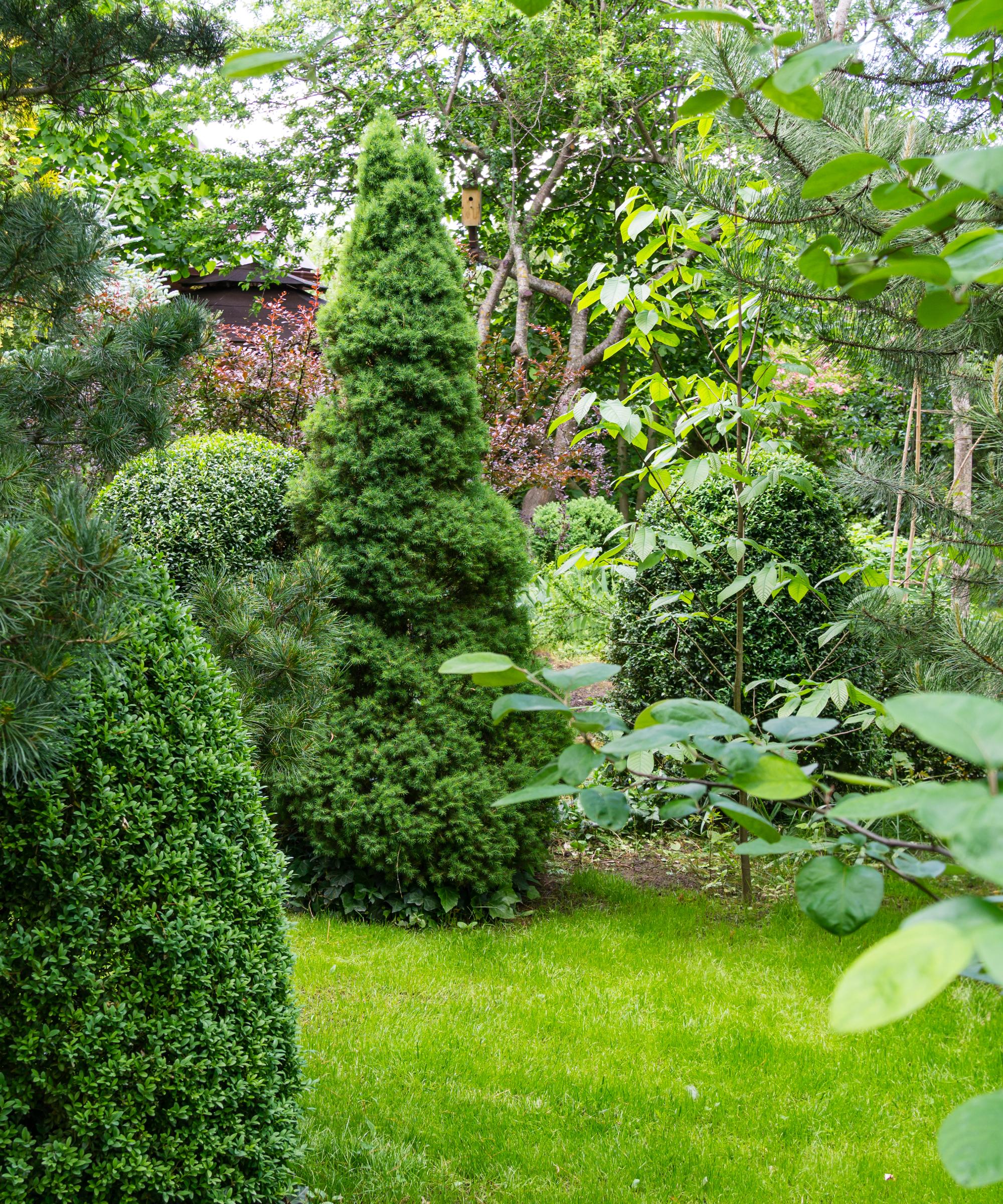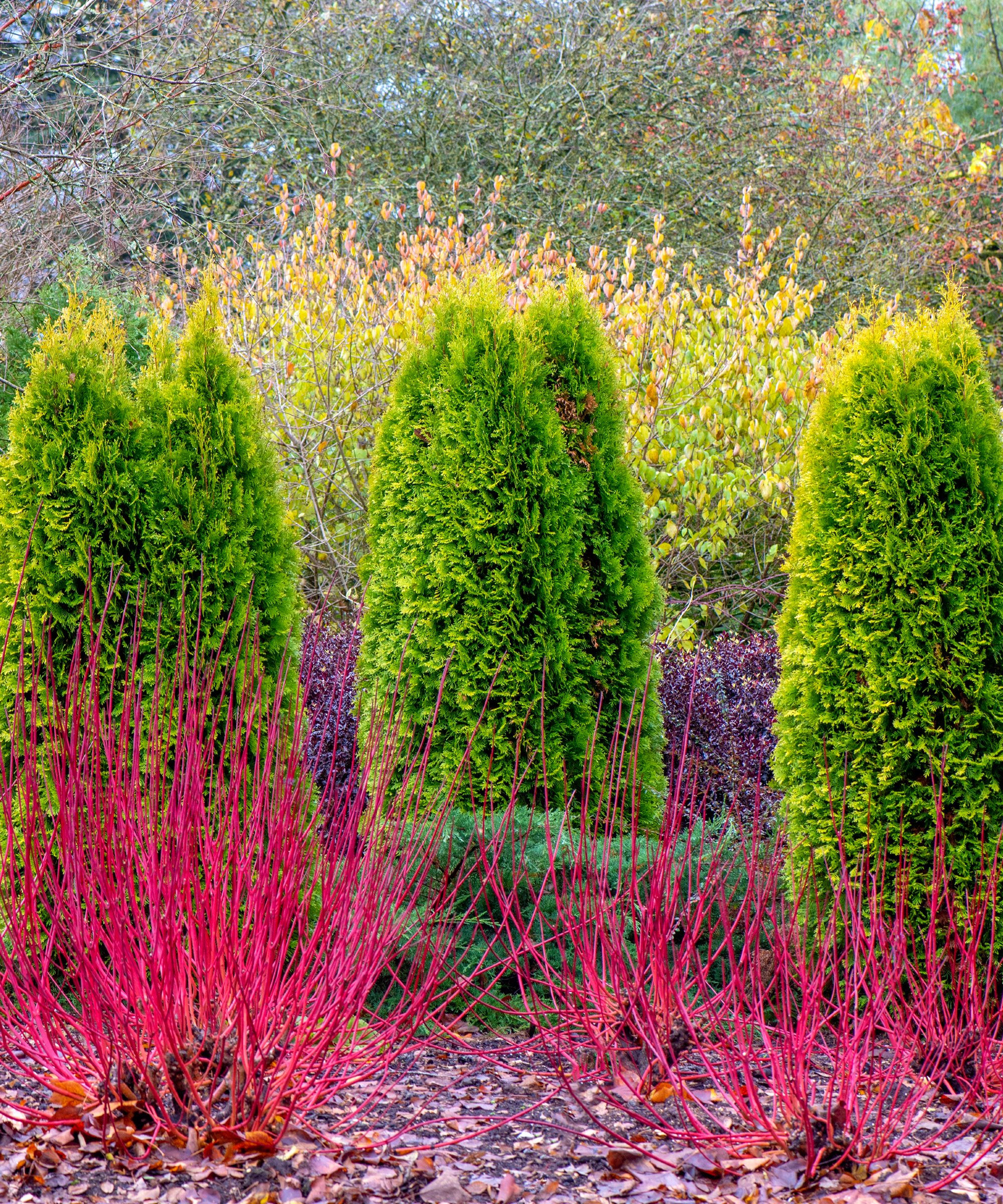Why do conifers go brown? Expert tips for avoiding this common plant problem
This advice will prevent your conifers going brown and stop them patching – to stay greener for longer


'Why do conifers go brown?' It's the question that many of us have asked ourselves at some point, but despite being a common problem for gardeners, the answer, and the cure, are rarely discussed.
This unsightly problem can happen to any conifer in any garden, but with a knowledge of the appropriate garden ideas, you can prevent your conifers from browning – and ensure your exteriors stay greener for longer.
Why do conifers go brown?

Brown patches can appear on every type of conifer. However, experts at the RHS suggests that conifers with '× Cuprocyparis, leylandii (leyland cypress), Thuja plicata (western red cedar), and Chamaecyparis lawsoniana' are the most prone to browning.
Here is why your conifer may go brown and how to avoid the process happening to one of your fast-growing hedges, according to the experts.
1. Poor growing conditions
Garden expert Daniel Akins from The Yardable explains that bad growing conditions are one of the main reasons your conifers may be going brown. 'Many patches are caused by bad growing conditions such as dryness, frost, or cold, drying winds that prevent the cut foliage from regenerating,' he says.
To avoid worsening conditions, Daniel recommends cutting your conifers in hot, dry weather, as this requires older wood to regenerate slowly and with less vigor than younger material. 'Consider the roots of your conifers in moist, rainy, moderate woodlands on the western fringe of North America when brown spots appear mysteriously on your conifers,' the expert says.
2. Unregulated pruning
While your growing conditions have a significant impact on your conifers, your cutting pattern is equally important.
Conifers green needles are the young, healthy new growth. Beyond that, towards the center of the tree, you will find brown needles that don't see much light and die off quickly. If you trim your tree back to these brown needles you will be left with brown patches that will never grow green again.
So, careful pruning, at the right time of year is a must.
'It's normally safe to cut two or three times in April, June, and early August. Removing competing vegetation for approximately 1ft on each side of the hedge,' Daniel explains.
In late winter, the expert suggests feeding it with a general fertilizer [such as this one from Amazon] before mulching the base of hedges with a 3in layer of well-rotted organic matter. This should help protect your conifer throughout the different climates.
Garden expert Andrew Porwol emphasizes the importance of timing when it comes to pruning your conifer. 'You need to get the timing and level of pruning right to avoid brown patches,' he says. 'Pruning in colder months will undoubtedly cause brown patches. If you cut your conifers back to the brown wood, the greenery will not regrow, so you will be left with woody patches.'
And only prune conifers within the green needle boundaries of the branches, and never back as far as the brown. Little and often is better than a drastic, once-a-year cut-back.

3. Investigate root problems
Conifers make for one of the best privacy hedges, but in all their evergreen beauty, they are not immune from root problems.
'When an entire hedge tree dies, something is wrong with the roots. Root diseases must be investigated if nearby trees succumb, and the roots and base of the tree must be inspected for symptoms of Phytophthora and honey fungus,' Daniel explains.
If your tree dies, it is best to uproot and burn your affected plants, as this is one of the only ways to halt the sickness. 'Consider whether the losses in the hedge correlate to locations that are particularly prone to drought or winter waterlogging. Before replanting the hedge, these parameters should be changed,' he adds.
How do you fix brown conifers?
Brown conifers can't be fixed – needles that have gone brown won't grow green again.
Why do conifers suddenly go brown?
Conifers suddenly go brown due to poor growing conditions, often being kept in containers that are too small or in soil that is too dry. Once brown, it is extremely unlikely that your conifer will recover its green leaves, though you can improve its conditions (and chances) by ensuring it is well-planted, well-watered, particularly on hot days, and well-fed.
Sign up to the Homes & Gardens newsletter
Design expertise in your inbox – from inspiring decorating ideas and beautiful celebrity homes to practical gardening advice and shopping round-ups.

Megan is the Head of Celebrity Style News at Homes & Gardens, where she leads the celebrity/ news team. She has a history in interior design, travel, and news journalism, having lived and worked in New York, Paris, and, currently, London. Megan has bylines in Livingetc, The Telegraph, and IRK Magazine, and has interviewed the likes of Drew Barrymore, Ayesha Curry, Michelle Keegan, and Tan France, among others. She lives in a London apartment with her antique typewriter and an eclectic espresso cup collection, and dreams of a Kelly Wearstler-designed home.
-
 5 surprising but brilliant ways to clean with old socks – from perfectly buffing stainless steel to deterring pests naturally and more
5 surprising but brilliant ways to clean with old socks – from perfectly buffing stainless steel to deterring pests naturally and moreTackle dust in tricky corners, clean your mirrors and even banish bad odors with those rogue single socks
By Andy van Terheyden Published
-
 How to grow astilbe – expert advice on cultivating this shade-tolerant flowering perennial
How to grow astilbe – expert advice on cultivating this shade-tolerant flowering perennialShade-tolerant and pest-resistant - astilbe are hardy and tough perennials that can thrive in many settings
By Ellen Wells Published